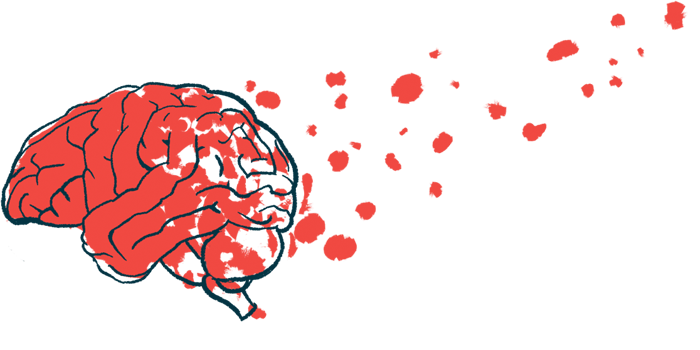Time Perception Impaired – but Only in Patients With Early Symptoms

The perception of time is impaired in people with symptomatic Huntington’s disease in its early stages — but not in patients without symptoms, a study revealed.
These findings suggest that time perception impairment may be used as a clinical tool for assessing those with the neurodegenerative disorder, the scientists said.
Notably, regardless of the presence of symptoms, the volume of grey matter in the brain — home to neurons that process information — was lower, especially in the striatum, in people who carry the faulty HTT gene that is the underlying cause of Huntington’s. The smaller grey matter volume correlated with time perception deficits.
The study, “The specific role of the striatum in interval timing: the Huntington’s disease model,” was published in the journal NeuroImage: Clinical.
How time is perceived over intervals of hundreds of milliseconds to minutes — known as interval timing — is associated with an area of the brain called the striatum, which coordinates multiple aspects of cognition, including motor and action planning, decision-making, and motivation.
Due to a faulty HTT gene, people with Huntington’s disease with degeneration in the striatum have been shown to exhibit impaired time perception, potentially due to the loss of nerve cells (neurons) in this region.
Although time perception has been primarily explored in people with Parkinson’s disease, neurodegeneration in this condition is not primarily associated with the striatum. As such, Huntington’s may be a better model for examining the role of the striatum in time processing, according to scientists.
To investigate further, a team of researchers based at the Paris Sciences et Lettres University, in France, now compared time processing as well as spatial processing among Huntington’s patients — with a special emphasis on interval timing, involving perception in the seconds to minutes range.
“The present study focuses on interval timing as this ability has been considered as crucial for various cognitive processes,” the researchers wrote, citing decision-making, rate estimation, multiple-step arithmetic, and learning and memory.
A total of 70 participants were included in the study: 25 Huntington’s patients in the early stage of the disease, 20 HTT carriers without motor symptoms (pre-Huntington’s), and 25 healthy people who served as matched controls.
Those patients who carried the HTT gene were clinically examined with the Unified Huntington’s Disease Rating Scale (UHDRS) and the Mattis Dementia Rating Scale (MDRS). Participants performed three different tasks assessing their perception of time (temporal) and space (spatial).
The first, a bisection task, asked participants to indicate whether a given time duration or spatial distance corresponded to a short or a long reference, which they had previously seen. Answers were given by pressing the corresponding key for “long” or “short” on a computer keyboard.
In the bisection task for time perception, the stimulus was the time interval between the appearance of a central black dot against a white background and that of a red dot within the black dot. In the spatial bisection task, the stimulus was the distance between a central black dot and a spaced black dot against a white background.
The overall bisection results indicated a significant deficit in the temporal domain for Huntington’s patients compared with controls, which was not found in pre-Huntington’s participants. When examining the temporal task alone, the results were the same. No overall differences were found in the spacial domain tasks, but a separate pairwise comparison showed a lesser difference between Huntington’s patients and controls.
In the second test for discrimination, participants received three stimuli and judged whether the third one was the same as the first two. The response was measured by pressing the corresponding key on the computer keyboard for the “same” or “different.”
In the discrimination task for time perception, the duration of the stimulus was displayed as a central black dot against a white background. In contrast, the spatial discrimination task was the distance between a central dot and an outer black dot against a white background.
Overall, all HTT carriers were globally impaired relative to controls, but for Huntington’s patients with symptoms, the deficit was more pronounced in the time domain than in the spatial domain.
When assessed separately, the time discrimination task showed impairment, and all additional pairwise comparisons were significant, with Huntington’s patients performing worse than pre-Huntington’s individuals who, in turn, were worse than controls. Similar results were seen in the spatial discrimination task alone but to a lesser extent.
In the third production task, participants were shown numerical values and were asked to produce the corresponding duration or distance.
For time perception, a black dot appeared in response to pressing the spacebar. Participants were asked to press the spacebar again when they thought the dot had been on the screen for the previously displayed duration. In the spatial production task, a value in centimeters was presented, and participants were asked to manually draw a line on a sheet of paper of a displayed length.
Overall, Huntington’s patients, but not those with pre-Huntington’s, performed worse than controls. The main temporal effect alone was not significant, nor was the spatial domain.
Participants then completed a questionnaire designed to measure their temporal and spatial difficulties in activities of daily life. For example, they were asked, “Have you been using your calendar more frequently lately?” and “Do you hesitate to go to unknown places alone?”
Overall, Huntington’s patients reported significant deficits compared with controls, but this was not the case for pre-Huntington’s individuals. “The data indicated a greater disorientation reported by [Huntington’s disease] patients than by Controls, but only in the temporal domain,” the researchers wrote.
In examining the temporal portion of the questionnaire alone, there was a higher degree of temporal disorientation for Huntington’s patients than controls, without a difference between pre-Huntington’s. For the spatial domain, no effect was found.
Within the pre-Huntington group, in the bisection task, those estimated to be close to symptom onset fared worse than those estimated to be far from the first disease symptoms, in the temporal domain but not in the spatial domain. No significant effects were found in the other tasks in this comparison.
A statistical analysis comparing tasks with clinical scores in HTT carriers found most clinical measures for worse disease correlated with the worse performance on the discrimination and bisection tasks in the temporal domain. In the spatial domain, however, clinical assessments were only linked with the discrimination task. There were no correlations between performance in any task and the estimated symptom onset in the pre-Huntington group.
Finally, 24 Huntington’s patients and 17 pre-Huntington’s participants underwent structural brain analysis to measure atrophy (shrinkage) using MRI within six months of the tasks.
Grey matter volume in HTT carriers was smaller than in controls, especially in the striatum. Worse performance in the temporal discrimination task was linked with a lower volume of grey matter. No correlations were seen between performance in other tasks and grey matter volume in these participants.
“Altogether, behavioral, brain imaging and questionnaire data support the hypothesis that the striatum is a specific component of interval timing processes,” the researchers wrote.
“Evaluations of temporal disorientation and interval timing processing could be used as clinical tools for [Huntington’s disease] patients,” the team concluded.
Moreover, the scientists suggest that their study may lay the groundwork for using such evaluations in clinical assessments, saying their approach “might already constitute a useful clinical instrument,” at least for symptomatic Huntington’s patients.
“Whether this questionnaire and temporal tasks could be used as preclinical markers of Huntington’s disease deserves further investigation,” they wrote.







